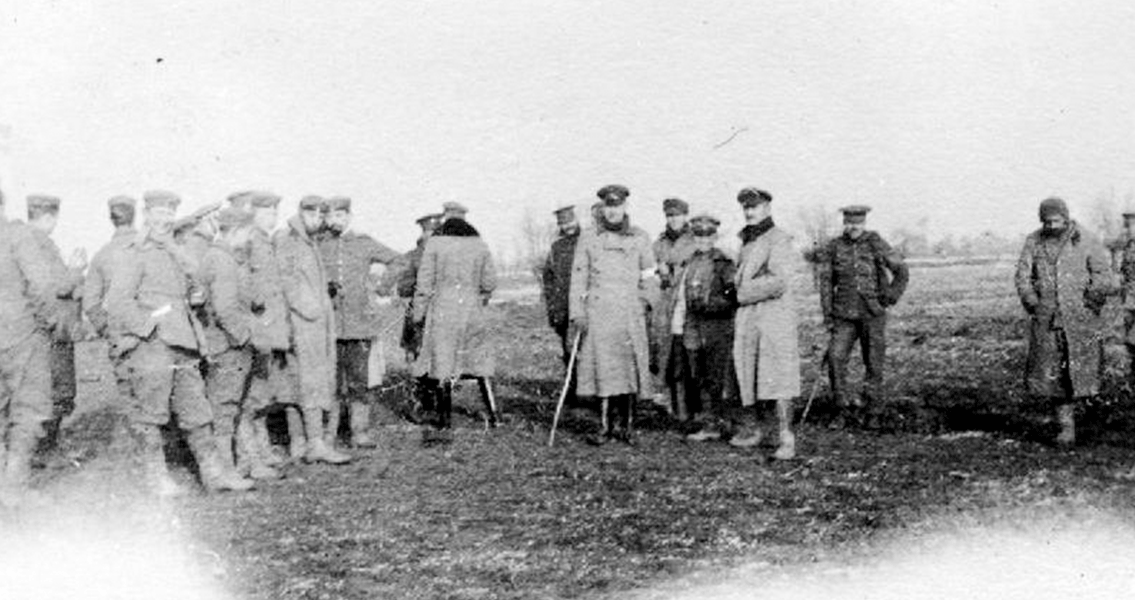<![CDATA[It stands as one of the most poignant stories of the twentieth century - on the 25th December a hundred years ago Allied and Axis soldiers on the Western Front put the First World War on hold to celebrate Christmas. The event has been absorbed into popular culture and is particularly poignant this year, when the world has reflected on the centenary of the outbreak of the First World War. From the Poppy display at the Tower of London, to a host of articles and books reevaluating every aspect of the conflict, there is no doubt that the War, and in particular its human consequences, have crept into the minds of more than just historians. Unsurprisingly, in the extended run up to Christmas the truce on the 25th December 1914 has received a lot of coverage, from a supermarket commercial depicting a game of football between British and German soldiers, to levels in a popular computer game allowing the gamer to take part in the cease fire. Details of how the temporary truce played out are often distorted by overly romanticised portrayals of the event. By December 1914 the war had been raging for five months, the mistaken propaganda on both sides that it would be 'over by Christmas' clearly proven false. The early advances of the German forces through Belgium and France had ground to a halt, to be replaced with the arduous horror of trench warfare. On December 7th 1914 Pope Benedict XV had suggested an unofficial cease fire to mark Christmas Day. He led a brief campaign to get each side to sign up to the temporary truce, initially Germany agreed, but the failure of any other nation to consider the idea meant it quickly faltered. How much influence the papal campaign had on the eventual truce is impossible to tell, but it is clear that the commanders of the British Expeditionary Force in particular were against any drop in the intensity of fighting over Christmas. On December 5th 1914 British General Sir Horace Smith-Dorrien had issued an instruction to the commanders of all the British Divisions. In it he described the dangers of festive nostalgia encouraging lethargy and destroying the 'offensive spirit' amongst soldiers. The instruction directly prohibited any "friendly intercourse" and "unofficial armistices" with the enemy. This stresses the extent to which soldiers were acting on their own initiative on Christmas Day, without official sanction. It also reveals the desperation for a break in the fighting - this was a time when disobeying orders or perceived desertion could be met with the firing squad. The truce itself lasted over Christmas Day and Boxing Day. At thirty locations along the front line in Belgium, as well as elsewhere on the Western Front, soldiers came out from their trenches to fraternise with their supposed enemies. Diaries of soldiers and official accounts talk about impromptu games of football, exchanging of gifts and the singing of Christmas carols, despite the brutal frost that had descended over Europe that winter. There was also a much more sombre side to the truce. The previous few days had seen some of the most intense fighting of the conflict to date. 'No man's land' - the territory separating the two lines of trenches - had been littered with fallen soldiers. The temporary truce allowed their bodies to be properly recovered, and burials to be administered. A grim task compared to the Christmas joy, but perhaps the most important consequence of the temporary truce. It should not be assumed that this truce took place across the whole of the Western Front. It seems to have largely depended on the initiative of individual soldiers on both sides, and probably a certain level of compliance from their immediate superiors. In many places the fighting continued on Christmas Day. Piet Chielens, curator of the Flanders Fields Museum, recently told the Daily Telegraph that on the stretch of the Western Front around Ploegsteert, scene of one of the most iconic images of the truce, 250 soldiers were killed on Christmas Day. The truce would not be repeated. For the remaining years of the war the intensity of the fighting would not lapse in December, as commanding officers on both sides strived to avoid a repeat of Christmas 1914. Indeed, the events of 1914 almost seem fantastical - many modern commentaries describe the truce in language reminiscent of a Christmas fairly tale - highlighting perhaps how difficult it is to imagine something like this could ever have happened. The thought of opposing soldiers, supposed mortal enemies, laying down arms for one day and fraternising as friends seems impossible now. Whether this reflects the exceptional nature of the First World War, or the changing severity of conflict in the last hundred years, is impossible to say. Narratives of the Christmas Day Truce are often distorted by overly romanticised depictions - depictions that gloss over the brutality of trench life, the return to bitter conflict that swiftly followed, and the grim reality that for many soldiers it was as much a day to collect fallen comrades as toast the Christmas spirit. The truce, and how we choose to remember it, tell us a great deal about how attitudes to war have developed over the last hundred years. Image Credit: Wikimedia Commons user - Robson Harold B]]>
The Christmas That Stopped A War
